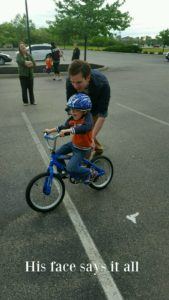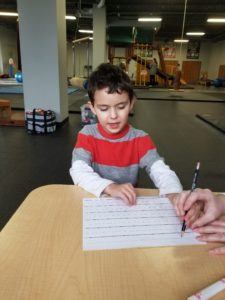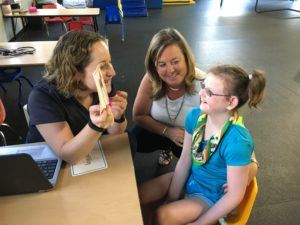development
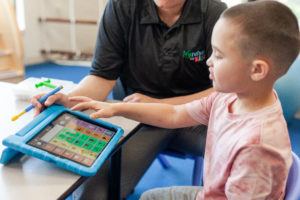
Applied behavior analysis, also known as ABA or ABA therapy, is a research-based treatment that has been shown to be effective for individuals with a variety of behavioral and developmental conditions.
It is more comprehensive than early intervention and is most commonly used to address problematic or dangerous behaviors and to improve skill deficits for individuals that have been diagnosed with autism.
Although ABA therapy can be effective for a wide range of individuals, years of research show that the strategies and processes to be the most effective for children before the age of five.
Early intervention can reduce behaviors that may have become engrained or routine. Early intervention also has greater chance of building pivotal developmental skills. Through a comprehensive approach, early intervention can include a focus on communication, language, play, self-help/adaptive, learning readiness, and social skills, as well as a reduction of challenging behaviors.
Programming is research based and tailored to each child’s specific needs and should include the adults in the child’s life to encourage skill growth and generalization outside of therapy sessions.
Starting early intervention can mean you’re catching and correcting issues at a critical point in the development of your child, changing their developmental path.
Written By:
Adrienne Oaks, M.Ed.
BCBA, COBA / Clinical Director

Large Motor:
Bike or scooter riding
Jump rope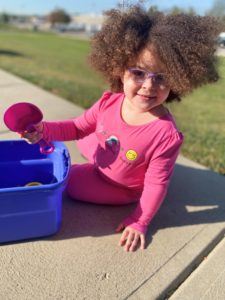
Throw, kick and catch a ball
Hit a ball with a racket or bat
Swim
Hike
Outdoor sports like kick ball, baseball, soccer
Follow a line of sidewalk chalk along a jagged and curved path.
Water balloon toss or water balloon baseball
Hopscotch
Small motor, Sensory and Motor Planning:
Sidewalk chalk
Scavenger hunt outside (find something: rough, smooth, green, pink, on top, under etc)
Obstacle course outside
Swim for balls or diving toys with sight words
Fill spray bottles with liquid watercolors, spray on easel outside with watercolor paper.
“Paint” with water, get out the old paintbrushes, paint rollers and mops along with a bucket of water and have the kids “clean” or “paint” the deck or pavement.
Paint rocks or a flower pot for the garden
Catch fireflies
Pick flowers
Make paper airplanes
Make ice cream or popsicles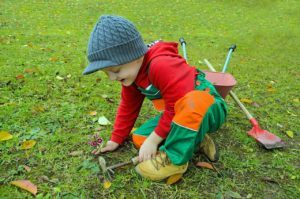
Play I-Spy on road trips
Leaf rubbing
Plant flowers
Make a windsock
Language:
Swim for balls or diving toys with speech words on them
Name items that start with certain letters or sounds while taking a walk
Talk about what is on top/under/next to while running errands
Ask Who, What, When, Where questions
Describe items outside or on road trips
If you have concerns about your child’s development, go to http://checklist.abcpediatrictherapy.com and fill out this checklist about your child. You will receive tips and tricks on how you can help your child. You will also find much information at https://www.abcpediatrictherapy.com.
Read More
1. By a young age, encourage your child to color and explore using paper and crayons as this is an integral part of your child’s prewriting and fine motor development. Continue working on purposeful scribbling, coloring in large/small shapes, drawing (specifically people), and using your child’s creativity throughout his/her childhood.
2. By 2 years old, your child should begin grasping writing utensils in palm and imitating vertical lines.
3. By 2.5 years old, your child should be able to grasp a pencil with thumb and fingers instead of a fist and begin drawing horizontal lines.
4. By 3 years old, your child should begin drawing circles stopping within ½” of the endpoint and making crosses (+).
5. By 3.5 years old, your child should begin drawing X’s.
6. By 4 years of age, your child should begin having a static tripod grasp (grasp using 3 fingers but limited movement within fingers/wrist).
7. By 4.5 years of age, your child should begin to draw squares.
8. By 5, your child should begin drawing triangles and writing numbers 1-5 and capital letters of his/her first name.
9. By 5.5, your child should be able to write numbers 1-10 and all capital letters.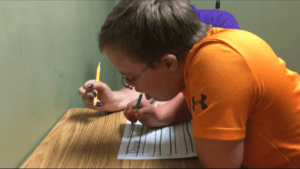
10. By around 6.5, your child should be able to write all lower case letters and have developed a dynamic tripod functional grasp.
If by 4, your child is demonstrating difficulty with holding a writing utensil (pencil, crayons, markers) with 3 fingers and maintaining a functional grasp, it is beneficial to use broken crayon pieces or color/write on a vertical surface as these two activities encourage use of a functional grasp.
Additionally, if your child is still demonstrating difficulty, there are hand strengthening activities you can complete to work on strengthening the specific muscles needed to hold/maintain a functional grasp:
1. Use tweezers to pick up small objects
2. Play with playdoh
3. Use thera-putty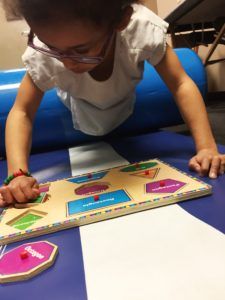
4. Engage with interlocking construction toys such as tinker toys or bristle blocks
5. Encourage water play with spray bottles, water guns, squirt toys, sponges, etc.
6. Clothes pin games
7. Hole punch activities
8. Squeeze toys and activities such as using glue
9. Weight bearing activities such as completing activities in prone (on stomach), wheelbarrow walking, animal walks, etc.
**Pencil grips should be used a last resort when teaching a child to hold a writing utensil as this hinders the development of functional grasp.
If you are having concerns or if you child is not progressing like you think s/he should, please do not hesitate to contact ABC Pediatric Therapy and specifically ask for an occupational therapist for more ideas geared towards your specific needs and if you have any additional questions or would like a free screening. Visit our website at www.abcpediatrictherapy.com to find the location nearest you.
Read MoreFrustration. We all experience moments of frustration, but the way in which we each handle our frustrations is very different and also very important. When children experience moments of frustrations it may include behaviors such as yelling, screaming, crying, hitting, etc. 
Does this sound familiar? Parents oftentimes feel overwhelmed and frustrated when their child is unable to communicate what is wrong or frustrating them and doing these undesirable behaviors. These frustrations and behaviors may actually be happening because your child is unable to effectively communicate to you what is wrong or what they want.
Let’s say you wake up in the middle of the night to your child crying and screaming. You are able to calm your child down, but they are still not able to tell you what is wrong with them. You know that something is wrong with your child, but you do not know the reason because your child cannot tell you; did they hit their head, have a bad dream, or are they sick? Only your child knows what is going on, but why won’t they tell you?
This type of situation can be both scary and frustrating for parents, but what can you do to help your child? Firstly, realize that children who have a difficult time communicating their wants/needs/ideas are more likely to become frustrated because their needs are not being met or they are not being understood. It is not necessarily that the child is trying to be bad, but that the child is so frustrated at not being able to communicate effectively that they communicate in the way that works for them which is the unwanted behavior. This decrease in communication and increase in frustration go hand-in-hand with children “acting out” or doing an unwanted behavior. When a child can effectively communicate their wants/needs/ideas, frustration and unwanted behaviors are more likely to decrease if the problem was an inability to communicate.
Secondly, make sure your child is on the right track developmentally with their speech and language.
Here are a few things to be on the lookout for:
· By 12 months of age, a child should begin making single words such as Mama, Dada, Doggie, Ball, Bye-bye, Hi, etc.
· By 24 months of age, a child should be using 2-word phrases frequently such as “bye-bye daddy”, “my ball”, “go potty” etc. and be able to identify basic body parts
· By 24 months of age, you should be able to understand approximately 50-75% of what a child is saying; you should be able to understand about half of what a child says.
· By 36 months of age, a child should be able to answer basic “wh” questions (e.g., “what’s your name”, “where does it hurt”, etc.) and be approximately 75% or more intelligible.
For more information on typical speech and language development in children up to six years of age, try our Interactive Screening Tool at checklist.abcpediatrictherapy.com.
If you notice that your child having a difficult time communicating, here are a few tips to try at home first:
· Use pictures or symbols that your child is familiar with. Have your child point to the picture or hand you the picture of what they are trying to communicate. Tell your child what you think their intention is and complete the task. For example, if your child points to the picture of the potty, say “Oh, you need to go potty. Let’s got to the potty” and take your child to the bathroom.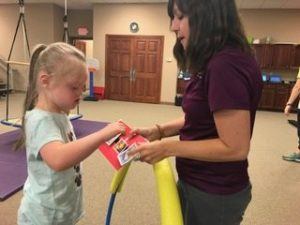
· Use basic hand signs and gestures with your child to help meet their basic wants/needs. Beginning signs to use with your child may include “more” and “all done.”
· Label items and objects with your child and talk about them.
· Incorporate music and play into your child’s daily activities.
· Talk and play with your child often. Children learn best through play and with other people face to face.
If your child’s communication skills do not begin to show improvement within a few weeks, it would be recommended to schedule a speech and language evaluation with your local Speech Therapist. For more information on speech and language development and speech therapy services, visit https://www.abcpediatrictherapy.com
Read MoreWhy are crawling and creeping important for development?
February 23, 2018 / Diane L. Crecelius, PT, CEO
It is important to remember that each stage of development builds on another. Each step is important for its own reason part of which is to build strength and/or endurance for the next step of development. Preferably you do not want your child to skip any steps as it could affect the ability to master the next step.
Crawling is basically commando crawling. The belly is in contact with the floor, elbows and knees are bent and the head is upright. The child progressively pulls on the floor with bent arms and legs to advance himself across the floor.
Try this – it is hard work!
Your child will develop neck and back extensor strength as well as arm strength that will allow him/her to progress to creeping. Creeping is a means of mobility with the arms straight, belly off the ground and weight on the hands and knees. The child reciprocally moves his/her arms and legs to progress across the floor.
Something you might not consider that is gained with creeping is a different visual field. When a child is commando crawling he/she sees a world that is on the ground. Once creeping, the world a child can view expands. This bring new information into a child’s brain to process and interact with.
A child puts weight on an open hand when crawling. Did you know that this weight on the palm stretches out the small muscles in the hand. This stretching of the muscles prepares a muscle for use for fine motor skills like pinching. Children that do not crawl might have difficulty with handwriting or shoe tying as the strength and endurance to maintain small muscle control to perform these functional tasks might be more challenging.
Interesting fact: Look at your child’s sweet little hand and forearm. Did you know that there are 35 muscles that control the movements of the hand?!?! That is a lot of muscle action!
As you can see, much is gained while crawling and creeping so it is preferable that a child not skip this stage. As a parent do not push your child to walk too quickly. Encourage each stage of development to happen as there is a purpose for each stage that builds upon another.
What should you do if your child skips the creeping phase or does not creep for long? Wheelbarrow walking is a fun activity that will put a lot of weight on the palms and simulate the same muscle actions as creeping. So hold your child’s feet and have them walk with their hands. Make a game out of it. Place puzzle pieces or Mr. Potato Head pieces around the room. Have your child gather the pieces and complete the activity at the end.
Continue to educate yourself as a parent on next step skills in child development so you know what toys to have at home and what skills to encourage and when.
For all your child’s developmental checklists go to https://www.abcpediatrictherapy.com.
Read More Skip to content
Skip to content
